 Are you a high school or college golfer who is majoring in minor golf skills? If you want to establish a career as a successful professional tour golfer when you graduate you need to know that there's a fast-track score improvement process and there's also a slow-track. In today's article I'll show you the difference, and I'll also show you how you can work on certain types of golf skills that will fast-track your development. Last week I discussed the importance of self-belief and confidence and I described the first of our golf success factors - The Golf Confidence Factor –the primary golf success driver for developing yourself and your game to tour standard in less time. Anyone willing to climb to the highest level of professional achievement most surely works on their self-confidence more than any other factor, and the reason is pretty simple; there will be many many setbacks along the way to the top, so you need know how to manage and continually develop your self-confidence. But that’s not enough, is it? I mean it's not enough to just be confident and believe in yourself because I’m sure you know of golfers who are very confident individuals but they don’t seem to perform nearly as well as you would expect them to when they are under increased pressure. Their confidence appears to erode quite quickly when they are faced with difficult shots at crucial times in a round.  Majoring in Minor Golf Skills So it’s one thing to have an abundant supply of self-belief and confidence, and another to have the type of golf skills that can back you up when you need them the most, under increased pressure. One of the most common problems we see at Pro Tour Golf College, and which we believe to a great extent explains this common situation is what we call “majoring in minor golf skills.” Golfers that major in minor golf skills have a tendency to practice the golf skills they are more comfortable with and easier to play. They get locked into their daily routines of comfort practice—that is, they practice golf skills and shots they are good at, and that are low on the challenge and intensity scale, rather than practicing and developing the more challenging golf shots that would have a more positive affect on their scoring on the golf course. You see the reality is that you have to practice a lot of different and varied golf shots to become a successful professional golfer, and you have to practice some types of shots a lot more often than others to influence a low seasonal competitive score average. Think of it this way, producing low golf scores on a relatively consistent basis requires an ability to make par or better, or bogey at worst, when you are not playing anywhere near your best. This is a simple fact of life for golfers who are successful on the pro tour. Can you score your best when your game is at its worst? 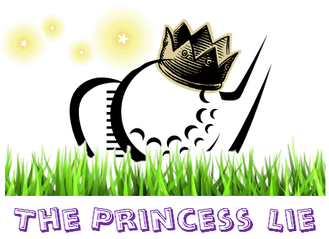 Stop Practicing from ‘Princess Lies’ When you go to the practice range and practice green do you practice most of your golf shots from near perfect lies, what we call princess lies, most of the time? If you are given the opportunity to practice more difficult shots from challenging lies, or to play shots from relatively easy lies, which way do you go? In our experience many young golfers are practicing from princess lies rather than practicing from pauper lies. Here's some simple questions to find out whether you practice from princess or pauper lies.
And the one constant is that you have to keep scoring low in every round you play to make cuts and to make checks. Have a look at the photo below of some of our students at Pro Tour Golf College practicing from pauper lies around the green. They practice like this way on a daily basis and over time and with lots of practice they learn how to get the ball closer to the hole. Many times you will miss greens in places where you will be required to produce recovery shots from lies that are anything but normal. If you are a high school or college golfer reading this, and you have your heart set on playing on a professional golf tour, and you want to be successful doing it, then you need to incorporate high pay-off golf skills practice into your daily routines, well before you get to play in your first pro tour event. 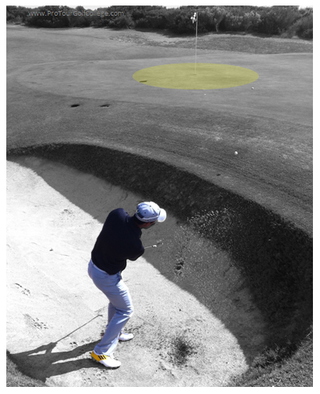 Become brilliant from all types of bunkers Become brilliant from all types of bunkers 2. The High Payoff Golf Skills Factor - Trouble Shot Mastery This is the second golf success factor, majoring in high payoff golf skills or trouble shot mastery. High payoff golf skills as you are learning are the type of golf skills that help you get you out of trouble to keep the momentum going during a round. Think about a time recently where you were playing quite nicely and then you had trouble on a particular hole and it disrupted your momentum and led to a higher score for the round than you imagined you would have. We want you to understand how important majoring in high pay-off golf skills is, when your goal is to play professionally. The pro game is very different to the amateur game because even though they both require an ability to produce a score, ultimately the main difference between the two is the amount of low scores you must produce over a season on a pro tour to be successful. Successful in this case means a high percentage of cuts made (more than 60 percent), and enough money in the bank after all the expenses have been paid to fund at-least the next season. You can’t walk away from a bad score in professional golf. If you have a bad round or two in a junior tournament your parents or well-meaning friends will probably tell you that there’s always another day. If you have a bad round in a college event, your coach will probably tell you that there’s always another day. But in pro tour golf a bad score means a higher likelihood that you will miss the cut and not make a check—and that's a big difference! And you don’t want to make missing cuts a habit. So how do you change this situation? 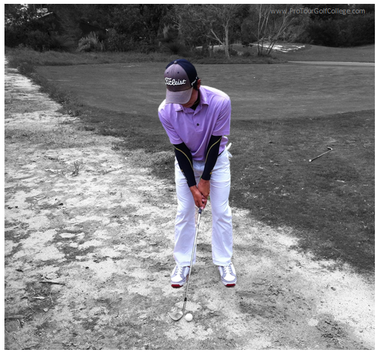 Practice unusual lies around the green often and get good at playing them Practice unusual lies around the green often and get good at playing them Worst Case Scenario Golf Skills Practice At least fifty percent of your available practice time should be spent developing your trouble shot scrambling ability around the green, and also including your approach wedge shots within 100 yards of the hole. The way we explain it to our students is to imagine that you are playing in a tournament and you are having a very bad tee to green day, and you have missed every green in regulation, and fifty percent of your tee-shots have gone into the trees. Right now estimate the score you think you would you have in this example. Score against par: ________ Now imagine that of the 18 greens you missed in regulation, you had
Now remember, the objective is always to make par or better, but how do you think you would do based on where your game is at the moment? How many up and downs for par are you likely to make? If you are like a lot of young golfers we work with, probably not that many. Now imagine that 3 out of 4 days were going to be similar to this. In fact, imagine that this was normal rather than abnormal, how would you go about developing your golf skills knowing this? Now you are starting to understand what professional golf is really like. 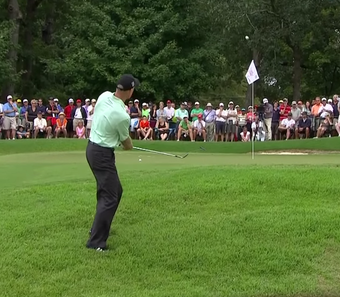 The reality is that great golfers are great at playing trouble shots The reality is that great golfers are great at playing trouble shots In Pro Golf Truth is Stranger Than Fiction Sometimes what actually happens on a golf course in a tournament is much stranger and unusual than anything that you could ever imagine. But if you believe that what they show you on the golf telecasts is true, then you will believe that professional tour golfers hit nearly ever green in regulation, and almost every fairway, and they hole lots of long putts, and they shoot 15 to 20 under every week. When you see the leaders at 15 under for 3 rounds, hitting virtually every green in regulation and draining putts from all over the green, it would be easy to think that this is normal. Yes it is normal that a few golfers every week will play golf like this, but this is far from normal over a season for the majority of professional golfers. If you simply look at the example of a professional golfer who is 15 under par for the week (or averaging 5 under per round), and then you look at his or her score average (actual) for the last season, you will see that they do not have a seasonal score average of five under par, but actually it is much closer to par. The truth is that if you are a high school or college golfer and you desire to become a successful professional golfer, then you have to develop the second golf success factor of developing your high pay-off golf skills, or trouble shot mastery. This is the real skill of a successful professional golfer, the skill of salvaging pars or bogeys at the worst, most of the time, from trouble lies and situations. Here's the Takeaway to Never Forget You build your golf skills for the pro tour around the worst case scenario—not the best case. Work hard on your high payoff golf skills by learning how to master your trouble shot skills, and you will discover that turning tough days into better scoring days will happen for you sooner than later, and much more often. See you next week for part 3. Lawrie Montague and David Milne - Pro Tour Golf College Your Success On Tour is Our Business History also shows that the majority of elite golfers who undertake major swing changes when they get to the tour rarely play better, and usually never recover to reclaim their original standard. It is quite likely that you are reading this article because you want to become a professional tour golfer, and right now you are in high school or college and you spend a lot of your available time practicing and playing looking for ways to play better sooner so you can achieve your goal. 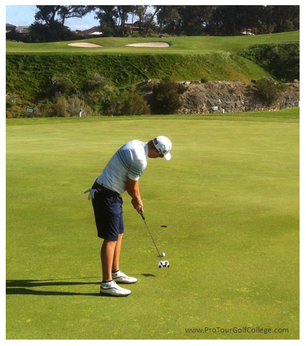 We Will Get You on the Right Path Well, in this article we will clear up some of the confusion for you and set you on the right path to learn how to travel safely and get your chance to earn a tour card and compete successfully on a professional golf tour. Firstly we will assume that you are already a very competent golfer. This means that you already can and do score in the low 70’s, and possibly even the high 60’s in tournaments. If you are not at this standard yet, this article will still be extremely helpful for you. Our goal in this article is to share with you the first of 4 Golf Success Factors that we have found to be vitally important for you to achieve your goal of becoming a successful professional golfer. The reason we can do this is because we work with ambitious amateur and professional golfers at Pro Tour Golf College virtually every day, and we spend a lot more time working with these golfers than most golf instructors would spend in a year working with their best students because our program affords us the opportunity to work with our students for 25 to 30 hours each week over 10 week periods. You watch a lot of the pro tournaments on TV or on your computer, and you see young male golfers like Jordan Spieth and female golfers like Lexi Thompson on the leader board at big tournaments, and you wonder what it will take for you to be that golfer. But are you confused? You might be a little confused because of all the conflicting information on the internet and TV about what it takes to become a successful golfer. And who could blame you, after all one golf expert will say this, and another will say that, and the TV commentators will say something else. So you probably scratch your head wondering how you will be able to sort out what you need to know, so that you don’t waste your valuable time working on things that won’t help you. So where do you start? What do you need to know to become a successful professional tour golfer? When you spend 250 to 300 hours per semester working with elite amateur and professional golfers, you tend to notice the dynamics that help them to make progress, and conversely you also notice the dynamics that hinder their progress. The 4 Golf Success Factors Over the next four weeks, we will share the 4 Golf Success Factors which will help you to continuously improve your goal score. What we propose is to distill down all the possible factors to the most important ones that we have discovered help young golfers make faster progress. 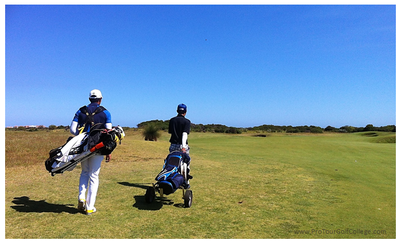 Treat Casual Rounds Like Tournament Rounds Treat Casual Rounds Like Tournament Rounds Confidence When it Counts is Key Many elite golfers can produce excellent scores when playing with their friends in familiar environments like playing their home course, but the same golfer in an important tournament will often crumble like a deck of cards. So the number one Golf Success Factor is The Golf Confidence Factor, your strong belief in yourself and your ability to play to the best of your ability when it counts. This factor truly determines how far you will go in the game of golf and every great golfer in history has displayed The Golf Confidence Factor. WARNING!! So what in our experience is the number one biggest destroyer of your golf confidence? Making major swing changes after the age of 20 years old. That’s right, if you want to get to the tour sooner than later, and you have played competitive golf for 5 or more years, and you have achieved a high level of competence in your ball striking, we have found that undertaking complex golf swing changes (where you tamper with the fine motor controls you have developed over your career) will do more harm than good to your golf confidence. You simply have to understand that as you get older you must be very careful with any swing change work you wish to perform with your golf instructor. By the time you become a tour golfer it is almost impossible to find the time to perform the type of swing change work that you have read Tiger Woods makes. Tiger had the time, resources, record and money to fully commit himself to the task and this puts him in a different situation to most golfers. History also shows that the majority of elite golfers who undertake major swing changes when they get to the tour rarely play better, and usually never recover to reclaim their original standard. Have a good look at our Golf Swing Change Model below to understand the implications of making complex swing changes at the wrong time in your development cycle. 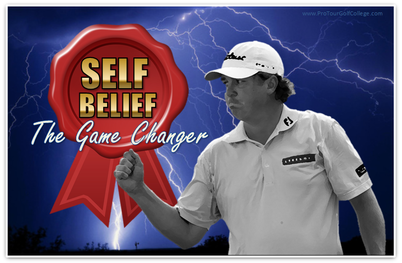 Every Golfer Displays Self-Confidence Their Way Every Golfer Displays Self-Confidence Their Way 1. The Golf Confidence Factor - Authentic Self-Belief and Confidence A few years ago a comprehensive survey of players and caddies was conducted on the European Tour by Genworth, a Lifestyle Protection and Mortgage Insurance Company who have sponsored ‘Statistics’ on the European Tour since 2007. Now what was interesting when we read this report was the response to the question “what is vital for success?” and the answer given by the 41 European Tour professionals who responded to the survey. 74 percent of these excellent golfers rated Self Belief as the most important attribute for success, which was closely followed by Mental Frame of Mind at 53 percent. Think about it, of all the factors that influence success, they recognized that self-belief was the most important attribute, followed closely by Mental Frame of Mind, and we completely agree. What is Self-Belief? But what is self-belief? When I looked up the definition of self-belief in the Collins English Dictionary it was defined as; “confidence in oneself and one’s ability.” That's sounds about right doesn't it? Self-confidence as it relates to your golf development describes the amount of certainty you have in your ability to perform your golf skills under pressure, and to also critically evaluate situations and make effective decisions. It also describes your self-worth, or the level of respect you have for yourself and your abilities. The reason these European Tour players rated Self Belief so highly is because they know that you can have all the ability and skill in the world, but it means nothing if you lack the confidence to follow through, that you don’t believe you can perform those skills when it matters most. Over the years we have seen many excellent golfers who had all the tools except enough belief in themselves, which is sad because we never got to see them live their dream and become a successful tournament golfer. 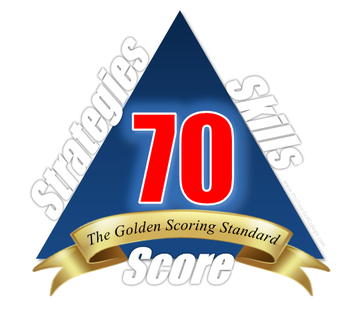 The Golden Scoring Standard You see the idea is for you to get your shot-making ability over a season to tour average in tournaments long before you go to tour school.
The 2 years leading into tour school should by devoted to playing lots of tournaments, gaining valuable tournament experience and working on all your scoring skills within 100 yards of the flag. Always remember that your success on tour will always be subject to your ability to score consistently in the low 70’s over a season. This is your most important consideration when developing your golf skills and ability. You build your golf confidence by working on your mental strategies, golf skills, and your golf score to improve your competitive ability. Your aim should be to move your game towards The Golden Scoring Standard of 70, and literally everything you do in the 2 years prior to attending tour school should be aimed at nothing else. The closer you get to 70 in tournaments the more success you will experience. 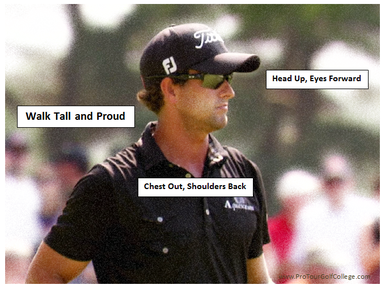 The Pro Tour Posture Performance Principles The Pro Tour Posture Performance Principles The following 5 Golf Confidence Strategies will help you to build authentic self-belief and confidence in yourself and your game. 1. Don't Trash Talk Your Game When you finish a round of golf only discuss the strategies that would have improved your score for that day. Do not provide golfers (or anyone else) with a postmortem of all the bad shots you played. Refrain from commenting negatively about your game. No one wants to hear about your bad shots and unlucky bounces. Build the habit of talking only about the good shots you played, and the strategies that would use to produce a better score for the day. 2. Walk Tall and Proud like the Champion Your Are Push your chest out, raise your eye line so you are looking way down the fairway, and not at your feet, avoid slouching, and walk briskly and without delay. Walk as if you were 6 inches taller with a neck brace on. If you are not playing your best it is even more important that you do this. Build the tall and brisk habit into your walk and you will see your world differently, and you will play differently as well. Have a look at Adam Scott and his tournament posture. Notice carefully the way he walks and plays. Jordan Spieth modeled himself on Adam Scott when he was still in high school and you can see the similarities when you watch him play. 3. Dress Like a Tour Star Iron your clothes, polish your shoes and wear clothes that make you feel better about yourself. The image you portray not only sends out positive messages to others, but it will make you feel good about yourself. A good rule of thumb is to "spend twice as much to buy half as much." Buy quality clothing that lasts longer, quality clothing keeps its color and wear-ability. Pay a little more upfront, and you will get a lot more for your investment in the long run. 4. Be Prepared to Play Makesure that you are prepared to play properly before every round of golf, and even when you go to practice. Get to the golf course at least 90 minutes before you tee-off mentally and physically prepare yourself for the day. Good preparation increases your confidence because you give yourself the time needed to stretch, go over your course notes and hit warm up shots and putt before you play. By giving yourself the time to get ready to play, you will reduce some of the normal anxiety you experience prior to hitting your first shot. This reduction in anxiety can make the early difference to your round to help you build momentum to give you your best chance to play your best. 5. Play Golf with an Attitude of Gratitude Lastly be thankful for all that you have achieved from golf, and be complimentary of others and their efforts to get better. Be above the small mindedness and pettiness of others by not joining in their conversation. You will gain little from hanging around golfers who only want to talk negatively about them-self and others . You are training to become a world class golfer, and you should start acting like one now. Great golfers have a presence about them, a rock-solid inner confidence and belief in their ability, and they know that they have the strategies and skills to handle the normal adversity associated with the game, and also rise to the occasion when they need to. Work hard on your self-belief and confidence, and practice the 5 Golf Confidence Strategies everyday, and you will be well on your way to becoming the confident and capable professional golfer you wish to become. See you next week for part 2. Lawrie Montague and David Milne - Pro Tour Golf College Your Success On Tour is Our Business A Golf Specific Musculo-Skeletal Screening: Your Long Term Future in Golf Could Depend On it17/11/2014
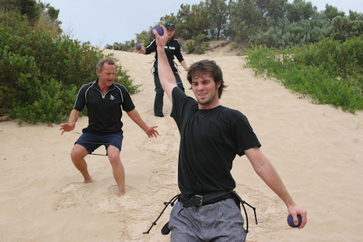 Ramsay pictured left taking a golfer through one of his specific routines Ramsay pictured left taking a golfer through one of his specific routines Ramsay McMaster was a world leader in physiotherapy—with a strong interest in golf. With his background in physiotherapy, Ramsay knew that there was a strong relationship between golfer’s physical capabilities and limitations and their ability to swing the golf club properly and remain injury free. In addition, many times, improvements the golfers were trying to make were impossible since their bodies limitations did not allow them to make them. He knew that a proper muscularly and skeletal screening method could identify these limitations. Then based on the results of the screen, a specific plan of improvement could be developed. As he began working with golfers at all levels, including elite golfers, he found that they were not being screened muscularly and skeletally in a suitable and specific way. Therefore, he developed a new and golf-specific Musculo-Skeletal Screening method. Ramsay, in addition to developing a new Musculo-Skeletal Screening method, developed a unique approach to preparing players for tournaments with specific pre-round warm up routines. When he first developed these pre-round warm-up routines they were considered "not normal," but then again anybody who knew Ramsay understood he didn't follow the crowd.  Click Here For Ramsay's Products Click Here For Ramsay's Products His use of large elastic bands, training belts and spikey balls are now the norm on golf tours around the world. Go to any amateur or professional tournament and you are likely to see Ramsay's toys (as he used to call them) being used in locker rooms and out on the practice areas. Unfortunately, he left us in December 2011, but his legacy lives on in the players, golf coaches and other service providers that he worked closely with for over 20 years. Here is a little more background on this expert. Ramsay migrated from Scotland to Australia. Based in Melbourne he:
What is Musculo-Skeletal Screening and Why Do You Need it? (11:47) David co-director at Pro Tour Golf College worked with Ramsay for over 20 years and through his close relationship with Ramsay he saw the value and the importance of his elite golfers working closely with Ramsay and the golf specific physiotherapists who were trained by him. In this interview David talks with Martin McInnes a golf specific physiotherapist based in Perth, Western Australia (trained by Ramsay) about the importance of having a Musculo-Skeletal assessment to identify your strengths and weaknesses and also how they affect your ability to move your body to swing the golf club in an optimal way. The Musculo-Skeletal Screening Tests (7:14) In the following video Martin McInnes takes one of our students at Pro Tour Golf College through some of the Musculo-Skeletal screening tests. You will see Martin testing for muscle length and strength and these tests really do expose weak areas of the body that can and do influence your golf swing to break down, and the screening process helps the physiotherapist and your coach identify the places where injuries could manifest over time. Stretching and Strengthening Exercises (17:58) In this video Martin McInnes takes another of our students through some specific golf exercises that relate to his specific weaknesses. These specific exercises are designed to strengthen and stabilize weak areas in the body and will influence more functional golf swing positions and better shot-making. A golf specific Musculo-Skeletal screening is a must for any serious golfer who wants to have a long and injury free career in golf. Because of the way the game is practiced and played elite golfers are prone to injury mainly because of the repetitive nature of their practice, and the forces involved in swinging a golf club and hitting a stationary ball.
If you are lucky enough to schedule a session with a physiotherapist who has trained under Ramsay McMaster in Australia or the United Kingdom then go and do it right away so you can find out specifically what you need to do to maximize the hard work you are putting into your game, and also reduce the likelihood of injury. If you haven't got access to a golf specific physiotherapist, then visit The Titliest Performance Institute website at http://www.mytpi.com/ to find an instructor in your region http://www.mytpi.com/experts who can take you through a thorough golf specific screening to get you on track to have a long and pain free career playing golf. Remember an ounce of prevention is worth a pound of cure. Lawrie Montague and David Milne - Pro Tour Golf College Your Success On Tour is Our Business 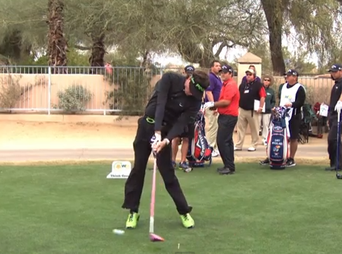 Bubba Watson Ranked Number 1 in Which Important Stat in 2014? Bubba Watson Ranked Number 1 in Which Important Stat in 2014? There is one statistic that will guarantee that a player will earn US 2 million dollars or more in a year on the PGA tour. The catch is that you have to be in the top ten of the new Strokes Gained Tee-to-Green statistic. That's right, get your overall ball striking to be gaining over +1.1 each round over the average player in the field, and the money you would have earned in 2014 season, starts from just under US 2 million dollars. So this newly introduced statistic on the PGA Tour is a more accurate method (devised by Professor Mark Brodie) to measure how a player ranks each round compared to the average player in the field for tee-to-green. Used in conjunction with the strokes gained-putting statistic, it helps to separate which parts of your game will put you into contention to win more often, and build consistency. As all shots hit on the PGA Tour are tracked by ShotLink, this new stat puts it into perspective how important it is to have a rock solid and consistent tee to green game. 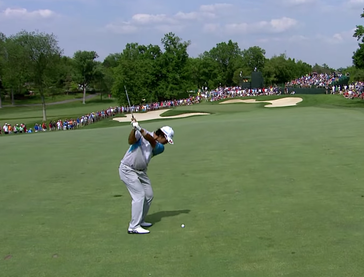 How Does Strokes Gained Tee-to-Green Work? The way strokes gained tee to green works is relatively straightforward: let's say the field's scoring average for Sunday at the tournament is even-par 72. Imagine, then, that Hideki Matsuyama shoots 70 and his strokes gained putting stat, for the day is plus one -- meaning that he gains one stroke on the field through his putting. In that scenario, Matsuyama gained the other stroke on the field from tee-to-green, so his strokes gained tee to green result that day would be plus one. The chart below indicates the players in the 2014 season that ranked in the top ten in strokes gained tee-to-green relative to the money won for the whole season was from 1.97 million up to 8 million dollars. Also it shows the comparison of greens in regulation, driving accuracy and distance, with the rankings in each category. The analysis shows that apart from Jim Furyk who is ranked number 3 in strokes gained tee-to-green, all the other players in the top 10 are in the top 60 for driving distance.  This means that if a young golfer is going to compete at the top level, and with the way modern golf courses are set up on the PGA Tour, driving it long, and having shorter approach shots is a major consideration if you want to earn the big bucks. We know that hitting it long is not everything though, but the stats are saying it does make a big difference. How can this help you to manage your game better. We had a student who trained at Pro Tour Golf College recently, and before he came to us he was told by his coach that he had to gain 30 yards on his drives otherwise forget making a career playing golf! Now if the pro's advice was given to every golfer, and they had taken heed of it, the world would not have seen Jim Furyk, or Luke Donald the former number 1 as they only average around 278 yards from the tee. What we always advise our players to do is look at all areas, not just the obvious one of technique, but look at the physical requirements like golf specific strength and conditioning, and also look at the suitability of your equipment i.e. clubs and ball, or a combination of all three, to gain as much yardage off the tee as you can. But in the end you have to build your game around what's going to make the difference in your game, and that is the skills that will lower your competitive score average, period. Keep working with your coach on developing ways to gain a few more yards off the tee, and don't make the same mistake that Luke Donald made by focusing solely on increasing driving distance and neglecting the parts of his game that actually got him to world number 1. If you're a coach or a parent and you want your child to become world class, give them the advice that Jack Nicklaus's coach Jack Grout gave him when he was learning the game, "hit it as far as you can with good balance, and we will work on accuracy later". That advice although given to Jack over 60 years ago, is still as relevant today as it was back then. David Milne and Lawrie Montague - Pro Tour Golf College Your Success On Tour is Our Business In our last article we shared with you the 3 shot window which is the zone that world class golfers score within. The idea behind this is that by getting your seasonal score average down to between 69 and 71 you will make more than 60 percent of cuts in a season, which gives you the opportunity to get paid at least 60 percent of the time in the tournaments you play in. But it is easier said than done isn’t it? Yes, there’s no doubt that scoring this low over a season is an outstanding ability, but it’s certainly not outside the realms of possibility, because there are many golfers who can already do it right? In our experience we find that the reason the great majority of professionals don’t score this low is because they work on their game at the wrong end of the golf performance spectrum. What I mean is that they work on elements within their game to improve the way they play, without always knowing what their target score average needs to be. They look at their stats, but not the most important one—their competitive score average. And that’s a big problem because it often leads to what we call the “somehow and in some way I’ll make it” approach to golf improvement. What we believe is a far better and more common-sense way for elite amateurs and professional golfers to develop their game to a world class standard is to start at the score end and work backwards. So let’s look at it this way. Since the par of most of the golf courses you will play in professional tournaments will be either par 70, 71 or 72, basically what you are aiming to do is score around 70 for the season. You will hear golfers and experts alike tell you that you shouldn't think about your score during a round, as this focuses too much on the result or outcome, and not enough on the process. 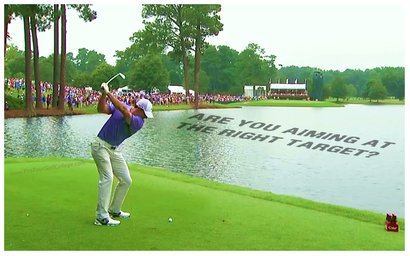 Rory McIlroy Plays in the World Class Golf Score Zone Rory McIlroy Plays in the World Class Golf Score Zone Fair enough, but as much as we understand the reasoning behind this, it makes little sense if you want to become a world class golfer. Why you ask? It makes no sense to work hard at your game for thousands of hours to try and become a world class golfer if you don’t know the target score you should aim for. In other words, how do you develop your game to a very high standard if you never truly define the standard to start with? Remember the “somehow and in some way approach?” It doesn’t work! In almost every athletic endeavor you define the time, or standard to be achieved, first and foremost. If you want to be a world class swimmer, sprinter, or marathon runner, you need to know the times that you will need to produce to be world class, and this is no different for golfers. Golfers should define the score average first. We firmly believe that much of the mental anguish experienced by elite golfers is primarily because they employ the “somehow and in some way approach,” as opposed to defining the specific target score they need, and then going after it. Do not 'hope' to be a world class golfer, establish your score target first, and then work out what you and your instructor need to do to develop your game to this standard. Irrespective of how you go about developing your game to world class standard, there’s something we have identified with world class golfers that will help you greatly. World class golfers who score around 70 for a season will make around 12 pars, 4 birdies and 2 bogeys on average. We call this the Golf Success Code 12-4-2, and this is what you must aim for.  Cracking the Golf Success Code Basically you need to develop your golf game to the standard where you will produce on average 12 pars, 4 birdies, and you make no more than 2 bogeys per round on any golf course you play. This is the world class tournament standard. Now you might be thinking to yourself that you can already make 12 pars in tournaments, (because many elite golfers can do this), and you will have rounds where you make at least 4 birdies, however the real challenge is averaging 4 birdies and just 2 bogeys each round. So how do you do this? The key is for you to think about how you make the bulk of your pars in every round. I’m sure you would agree that most of your pars in each round will come from your tee to green effort. You make most of your pars in a round by hitting enough greens in regulation. The tee to green tournament standard you need to aim for is to average 8 to 10 fairways per round, and 11 to 13 greens in regulation. Assuming that you rarely 3 putt, you will make around 10 to 12 pars per round with this tee to green standard. For producing 4 or more birdies on average per round—outside of making the occasional birdie by hitting 11 to 13 greens in regulation, you will make the majority of your birdies on par 5 holes. Depending on the average length of your tee-shot, this will get down to your approach wedge and greenside skills ability within 100 yards of the pin. Golfers who hit their tee-shots in the 270 to 290 yards or longer range will be able to reach many par 5 holes in 2 shots, thus increasing the probability of making more birdies on par 5 holes. But what if you are not in this long-hitting class but you still need to make enough birdies in each round to meet the birdie quota? 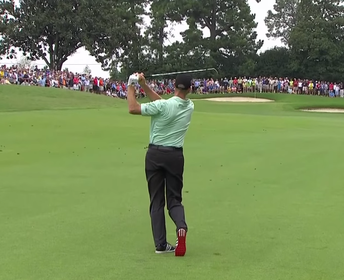 Jim Furyk is an Approach Wedge Specialist Jim Furyk is an Approach Wedge Specialist What are you are going to do? You will have to be a first class approach wedge specialist. If you hit your tee-shots in the 250 to 270 yards or shorter range, you are going to be hitting many of your approach wedge shots from 40 to 120 yards to the pin. So you will need to hit your wedge shots with excellent distance control and accuracy to increase your probability of converting many of your wedge shots into birdies. The skill set you need to develop is to make a minimum of 2 birdies for every 4 par 5 holes you play. In other words you will need to birdie at least 50 percent of the par 5 holes you play over a season. It is possible that you will make another birdie or 2 on the par 4 holes each round, and maybe the occasional birdie will also be made on par 3 holes. But most of your birdies will come from the par 5's. Finally keeping bogeys down to just 2 per round or less will require that you are exceptionally skilled within 30 yards of the edge of the green, including shots from greenside bunkers. When you miss greens in regulation you will need to be able to scramble your ball from all types of grass and sand lies, and you need to develop the ability to hit your ball to within 10 feet of the pin at least 80 percent of the time. You will also need to be able to make between 50 and 100 percent of your putts within this range to keep your bogeys down to a minimum. This will mean that you will have to become an exceptional putter from 3 feet to 10 feet over a season. From good lies around the green you will need to get your ball within 6 feet of the pin most of the time, and from poor lies to within 10 to 12 feet of the pin. The best golfers in the world perform to this standard consistently, and that is the main reason they can score as low as they do. 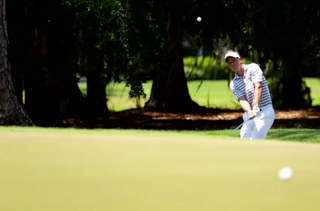 Luke Donald Has Exceptional Greenside Skills Luke Donald Has Exceptional Greenside Skills The 12-4-2 score code model will help you to dissect each area of your game, and it will help motivate you to spend the necessary time to upgrade your weaker skills to the standards we have described. Every time you play a round—whether in practice or during a tournament, write down your full score code rather than just your score for 18 holes. How many pars, birdies, bogeys and worse did you have, write it down, and then analyse how you produced it. You will find this easier to do by breaking your game up into 4 units. At Pro Tour Golf College all our training is aimed at improving the following 4 units. 1. Tee to Green Skills 2. Approach Wedge Skills 3. Greenside Skills 4. Putting Skills By writing down your full golf score code you will gain a better understanding of what you need to improve in your game to lower your score average into the world class golf score zone. And we think it’s important for you to remember that all the excellent golfers who have made it into the top 100 ranked golfers were once where you are now, and they found their way to score between 69 and 71 on average. That is the world class golf score zone that will help you to make many more cuts than you miss, and more money than you could probably spend in your lifetime. We wish you the very best with your efforts to join the top 100 golfers who play in the world class golf score zone. Lawrie Montague and David Milne - Pro Tour Golf College Your Success On Tour is Our Business |
Archives
June 2019
|
Proudly Supported By
Copyright © 2011 - 2018 Pro Tour Golf College
Website Managed By Golf Performance Media
All Rights Reserved
Website Managed By Golf Performance Media
All Rights Reserved

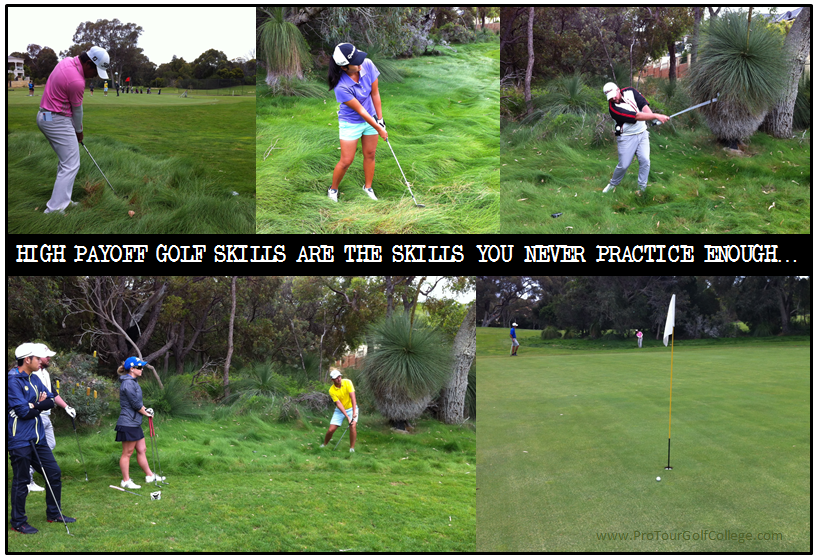

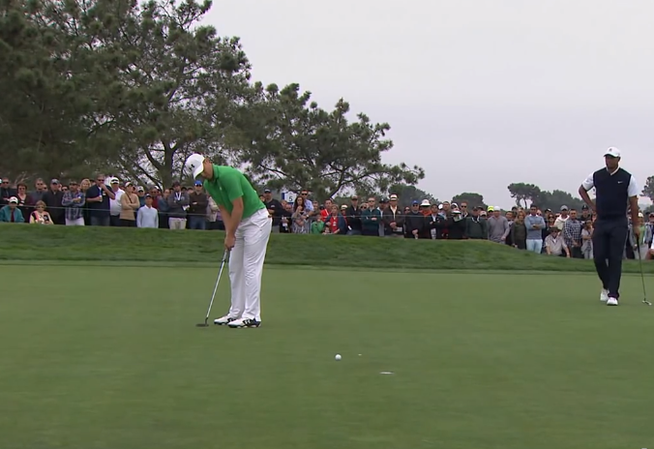
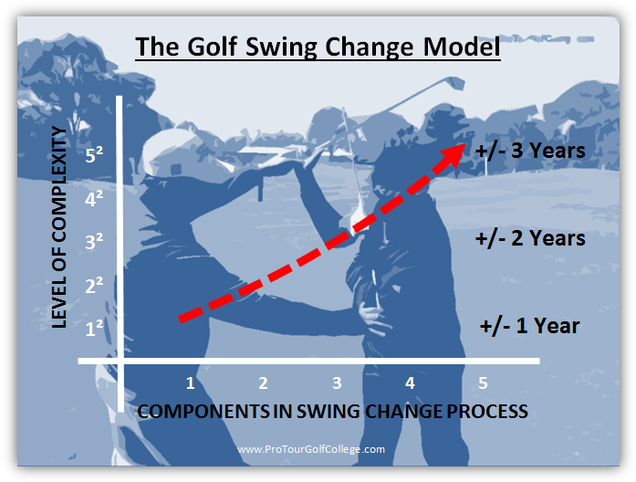


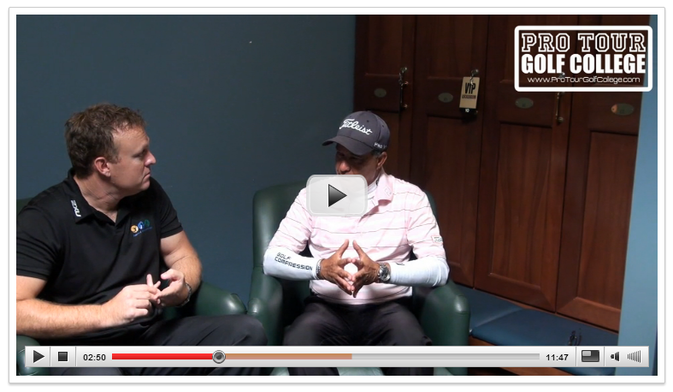
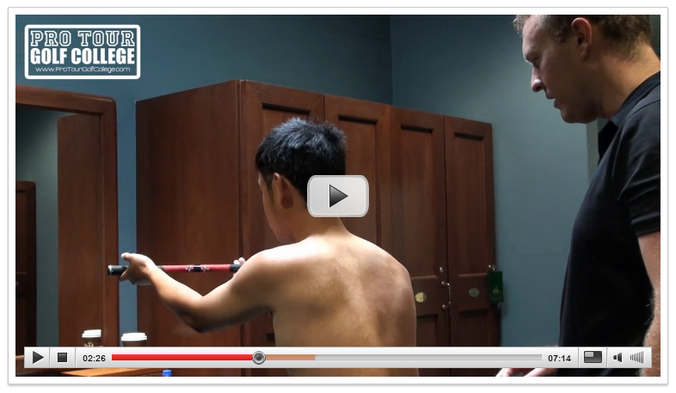
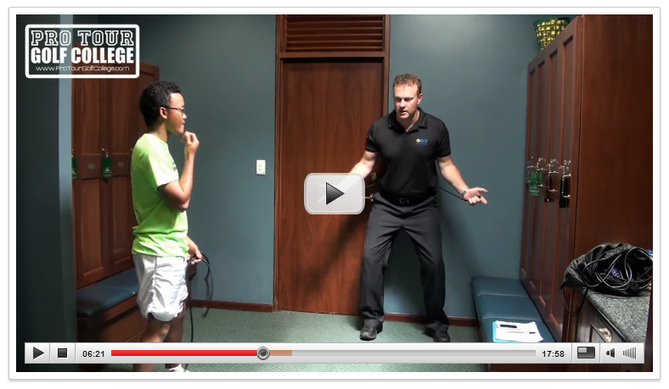

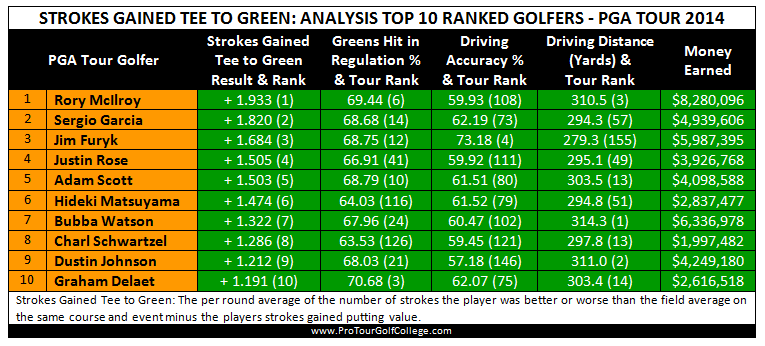

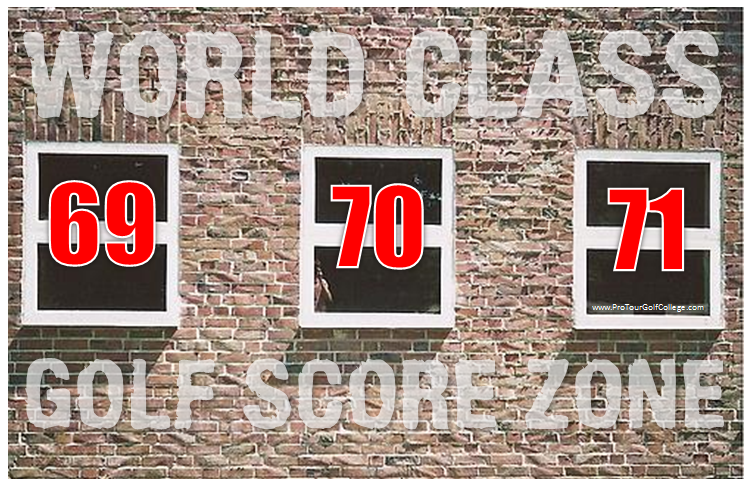
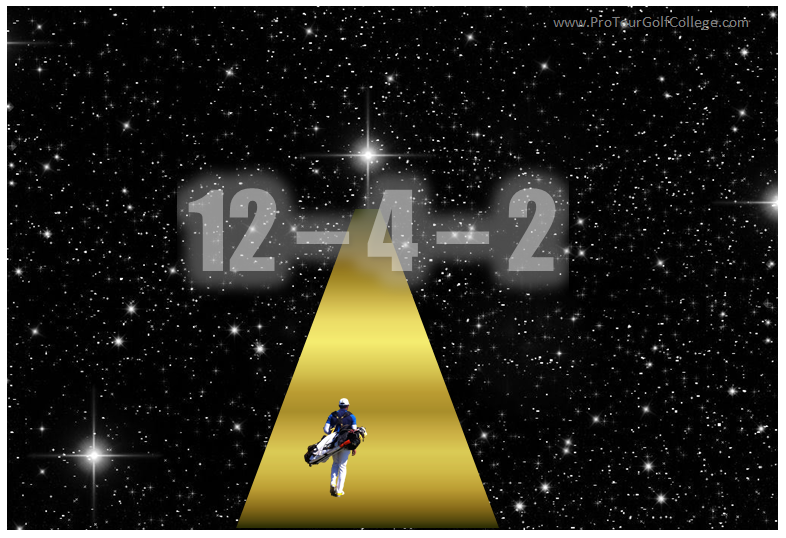
 RSS Feed
RSS Feed



